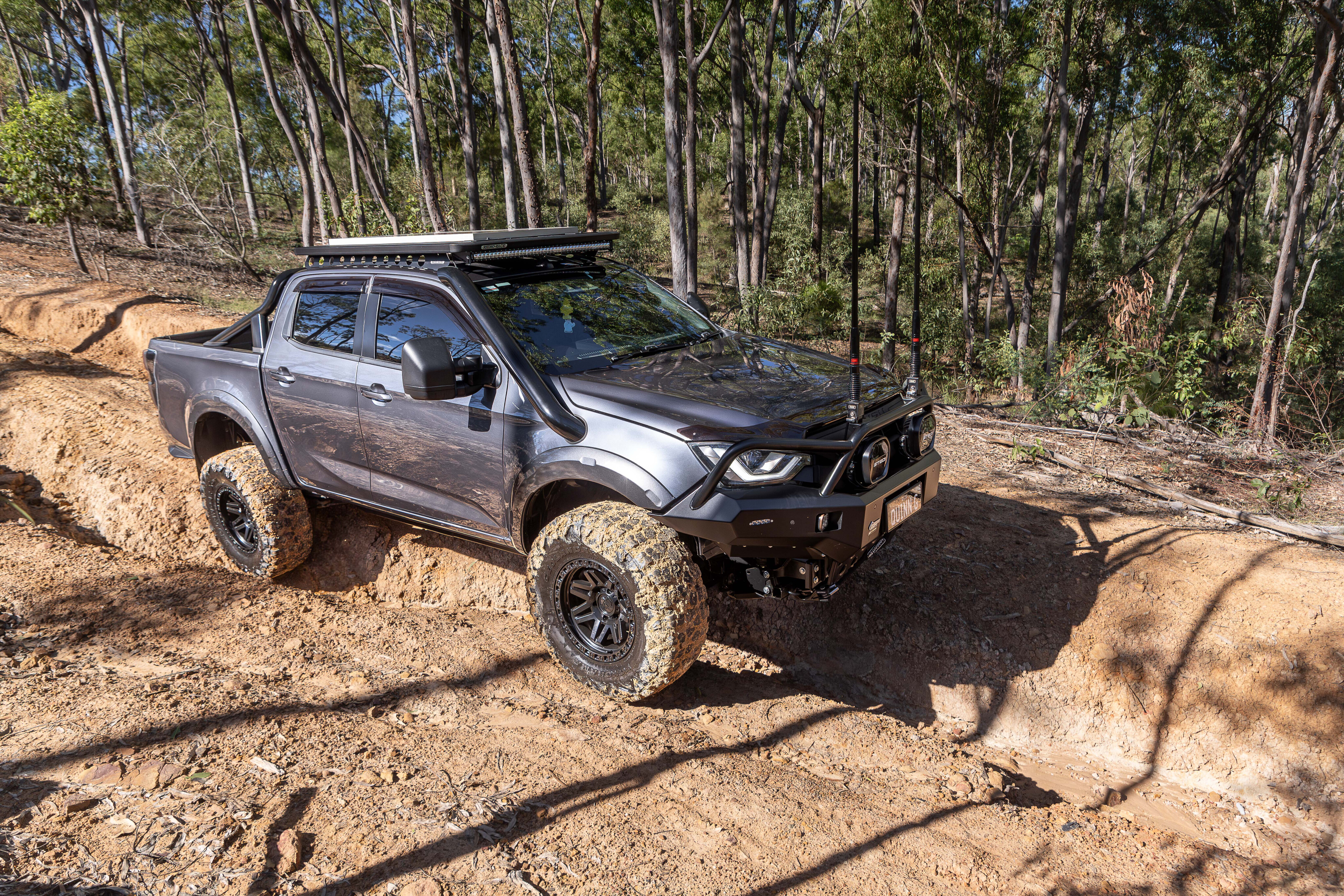
A couple years back, Quinn was on the lookout for a late-model work ute that he could use for the daily commute and trips into the bush after his 2013 Ranger met an untimely end at the hands of a deeper-than-expected water crossing.
He hit up his local mechanics for advice on what to buy and they mentioned that they didn’t get a lot of Isuzu utes in with any serious issues. So he went shopping.
At the time, the country was locked down thanks to the spicy cough and used vehicle prices were hovering somewhere between ‘tell him he’s dreamin’ and eating paint chips as a non-fatty snack.

Quinn quickly realised that, absurdly, new vehicles were actually competitively priced against the bonkers used market so after a trip to his local D-MAX dealer he came away with a brand spanking 4J-powered weapon that was just begging for a few mods.
He initially threw in a set of strut spacers to get a bit of real estate under the sills, then spent the next few months hatching plans for what he wanted to achieve from his new beast.
While it’s not exactly finished (they never are), Quinn reckons it more than does everything he asks from it and is pretty happy with how it has all panned out. Then again, you’d have to be a pretty salty person to be mad at a late model ute on 35s.
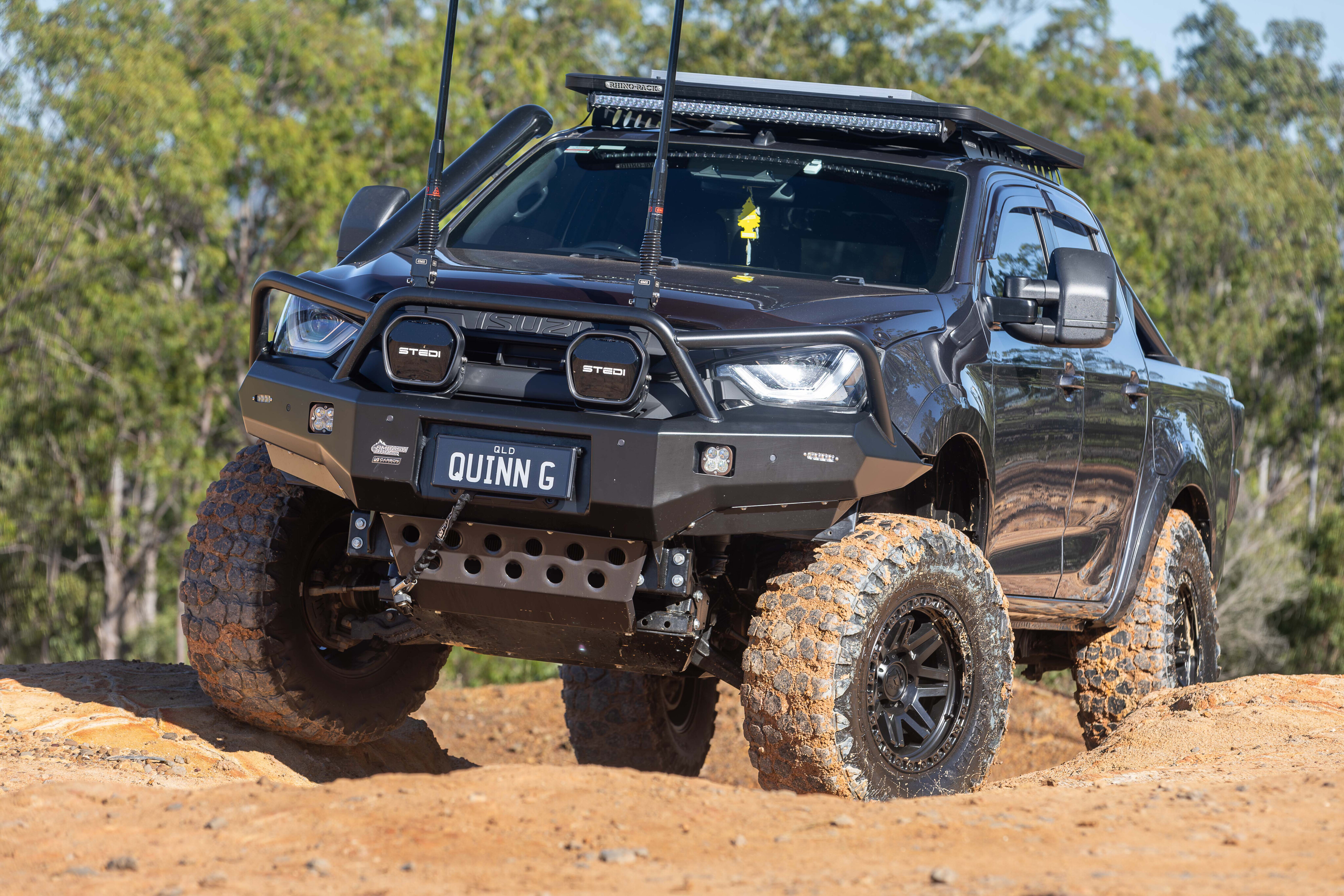
The front end
The nose of the D-MAX is protected by a trick-looking steel Ambush bar from PSR that’s been churched up with a Carbon winch should Quinn find himself without forward momentum halfway up a Kenilworth hillclimb.
Stedi Evo spotties are also mounted to the bar, helped out by the 40-inch Stedi light bar up on the leading edge of the roof rack. Twin UHF antennas (one for the radio, one for the Cel-Fi mobile signal booster) on fold-down brackets and LED fog lights round out the front end nicely.
It should also be noted that the engine, transmission and transfer case are all protected from errant rocks by PSR steel bash plates.
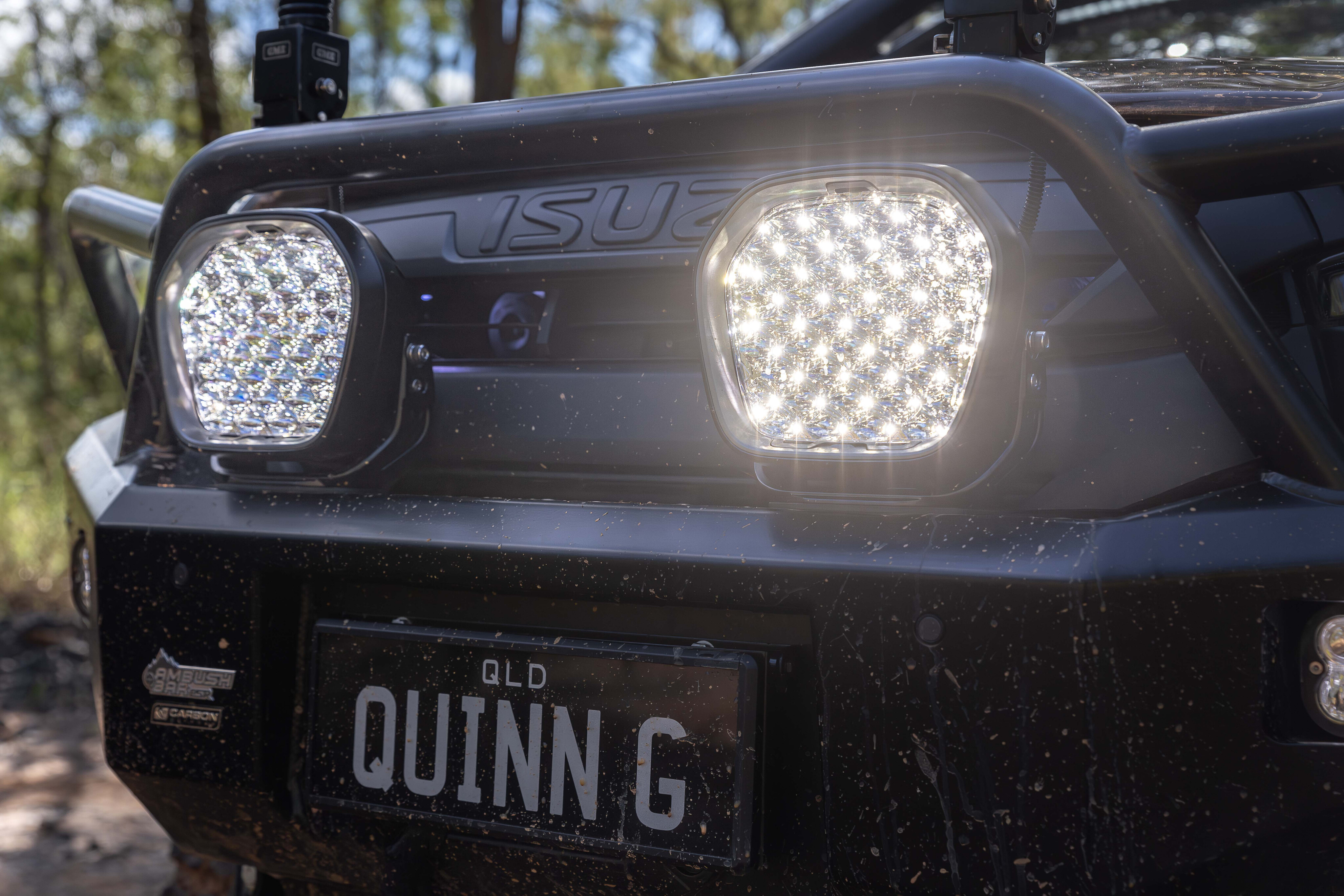
Speaking of the engine, it’s stock for now but once the new vehicle warranty is done Quinn has plans to go ’nanas with an uprated turbo and injectors along with an aggressive tune to get the most out of the venerable 4J.
Until then, a Phat Bars 4-inch snorkel feeds the engine fresh air and a 2.5-inch mild steel exhaust carries the fumes out the back. And to be fair, the 4J-series powerplants are pretty decent right out of the box.
When off-road, the dual-cab’s sills are kept smooth and wrinkle-free by Phat Bars sliders that have been raised two inches to line up with the lifted body. Meanwhile, Clearview Next-Gen mirrors let Quinn keep an eye on any trailers he may be towing up to Moreton or K’Gari.
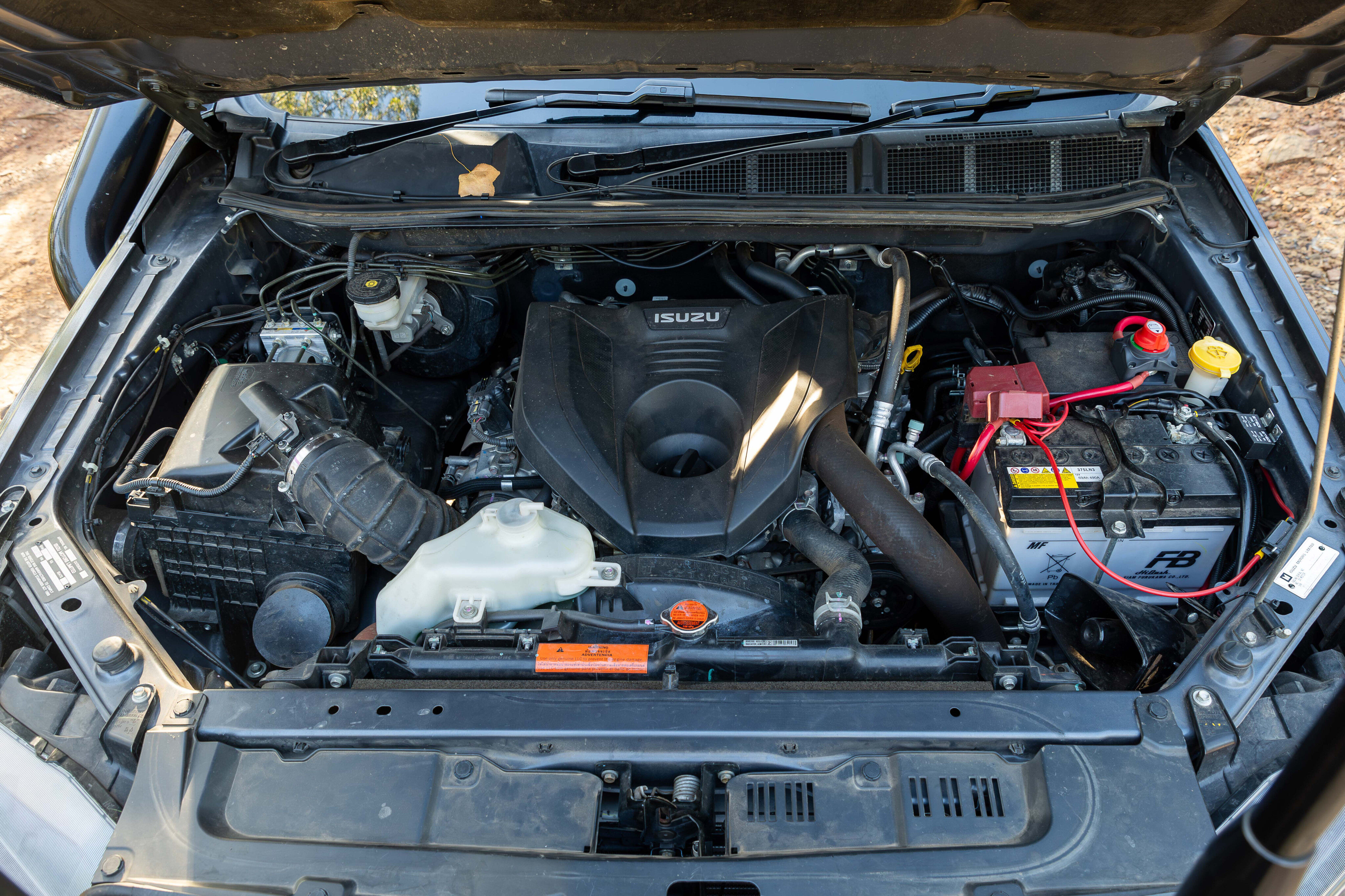
The back side
There are plans afoot for a tray and canopy set-up to replace the styleside tub before long, but Quinn has still made the most of what he has.
While not mounted for our photoshoot, there’s a custom tub rack for the Darche Intrepidor roof-topper that goes on before a trip. Twin Stedi work lights provide rearward illumination, and the tray also plays host to an unobtrusive-looking waterproof box that, upon first glance, doesn’t appear to be anything other than a bit of extra storage.
A closer look, however, reveals a few cables and Anderson plugs running to the box, and the roof-mounted solar panel is hooked up to it as well. Yep, Quinn has mounted his second battery, a 100Ah lithium unit, in there making it completely removable and transferable to another vehicle in a matter of seconds. Pretty clever, eh?

The system is overseen by a Redarc BC-DC 40A charger and a Redarc 1500W inverter throws out the 240V for the home comforts when camping.
The solar feeds it charge when stationary and the D-Max’s alternator keeps it juiced up while underway. A simple and effective way to get a second battery on board without having to hard mount anything.
Interestingly, a rollbar from an N80 HiLux was also bolted into the tub to provide a bit of damage resistance should the horizon do an inadvertent one-eighty.

Fitting big rubber
Getting 35s on a newer vehicle is always a bit trickier than on an older rig, but nothing that Quinn couldn’t handle.
While he initially fitted a set of strut spacers for lifting the front end, he dived in and began researching the best way to get the 315/70R17 Yokohama Geolander muddies under the guards.
Getting the tread out from under the sheet metal was step one. A little judicious trimming and folding of the wheel arches was undertaken, and the fitment of the 17x9 Fuel Syndicate alloys, with a -12 offset, pushed the tyres out far enough to clear nicely.
They also gave a rather big nudge to the looks department too, but that was just a bonus, not the objective.
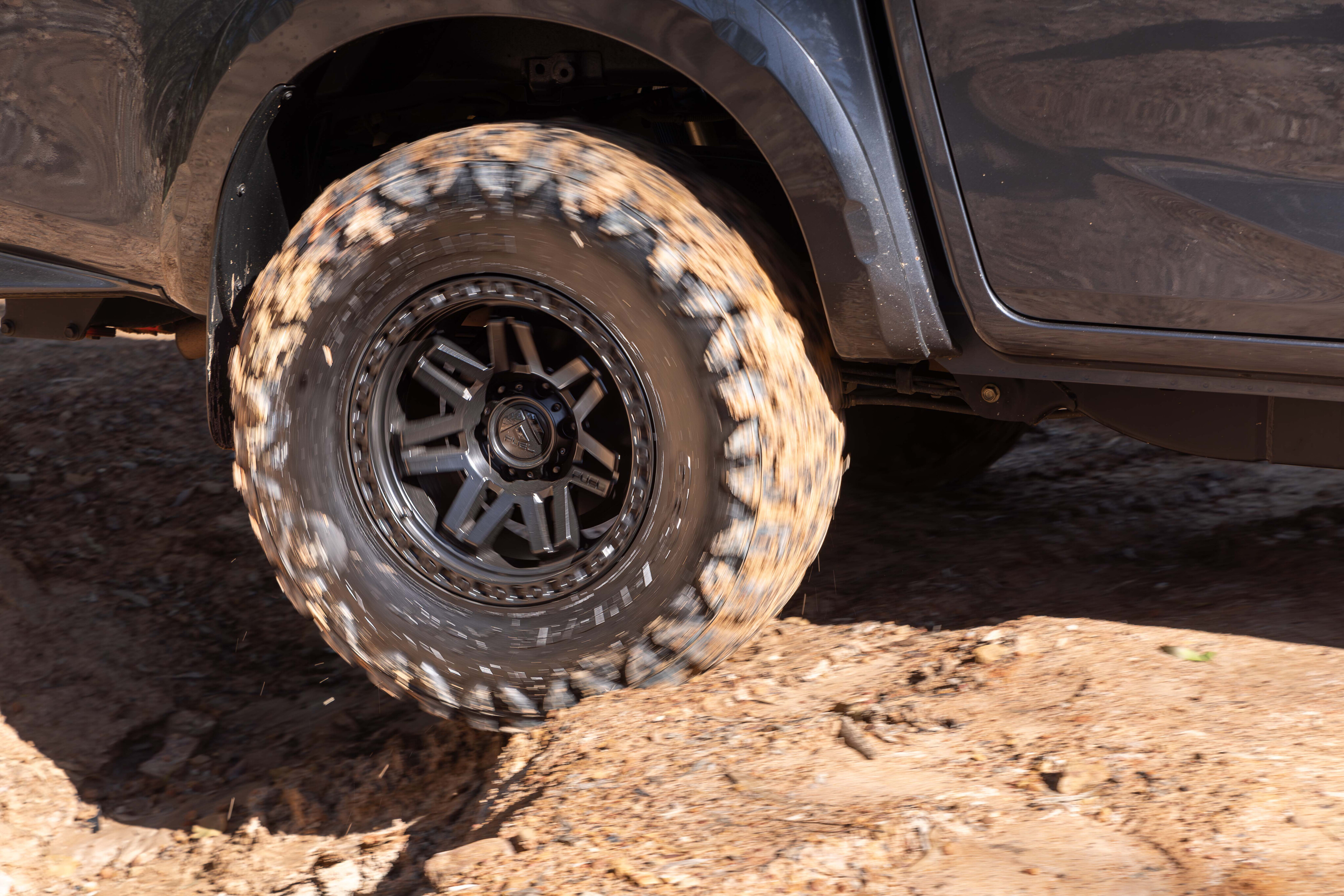
Even then, when hitting a decent bump the big Yokos would still scrub a little, so the body mounts spent some alone time with the grinder for added clearance.
With the width sorted, the height was next to be tackled, and two inches of altitude was gained via a Munji body lift, then an additional three inches was gained from Superior Engineering 2.5-inch diameter remote-res struts up front, and Superior extended shackles at the rear. The whole show works incredibly well and Quinn has no complaints.
With regular trips to the islands and beaches, as well as the odd trip with mates into the SEQ hinterland, the D-Max soaks it all up with minimal fuss. Just goes to show, nothing is impossible with a bit of time, thought, some good gear and the right attitude.




COMMENTS